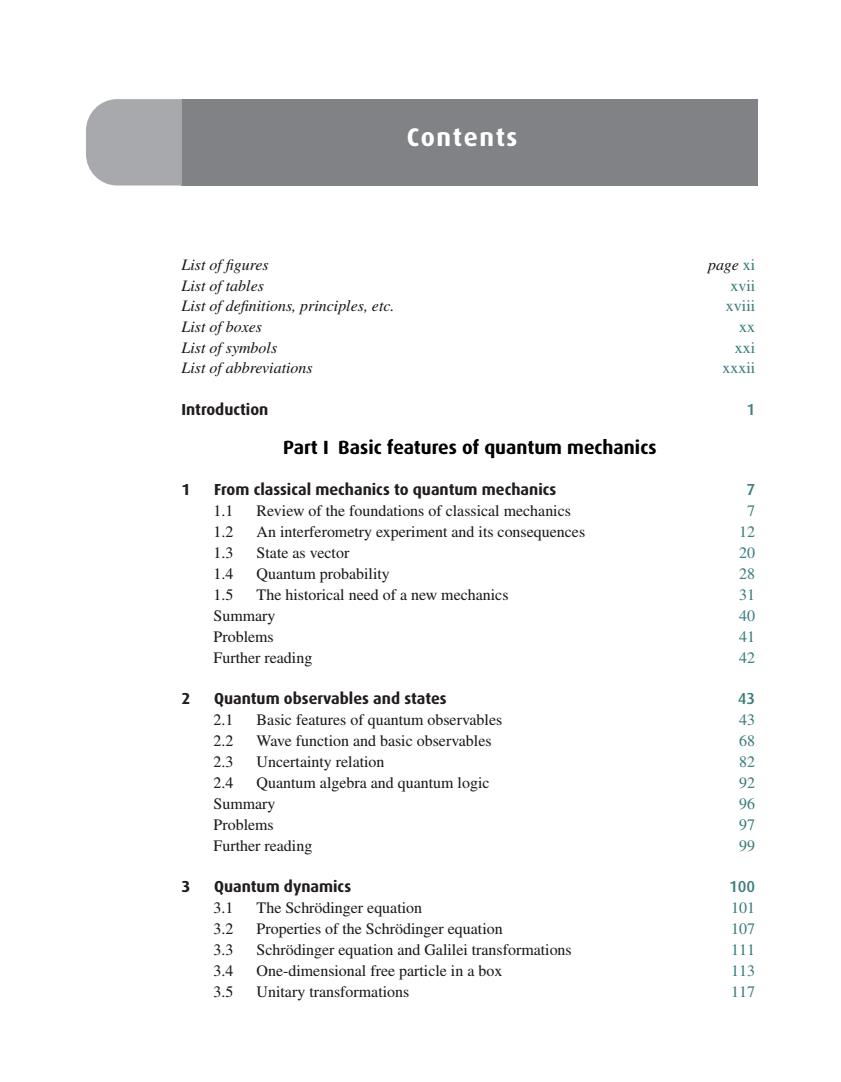正在加载图片...

Contents List of figures page xi List of tables List of definitions,principles,etc. xvi List of boxes List of symbols List of abbreviations Introduction Part I Basic features of quantum mechanics 1 From classical mechanics to quantum mechanics 7 1.1 Review of the foundations of classical mechanics 7 10 An interferometry experiment and its consequences 1.3 State as vecto Quantum probability 2028 1.5 The historical need of a new mechanics Summary Problems Further reading 2 Quantum observables and states 3 2.1 Basic features of quantum observables 2.2 Wave function and basic observables 68 2.3 Uncertainty relation 2.4 Quantum algebra and quantum logic Summary 2% Problems Further reading 3 Quantum dynamics 100 3.1 The Schrodinger equation 101 3.2 Properties of the Schrodinger eq ation 107 3.3 One-dimensional free particle in a box 35 Unitary transformations 117Contents List of figures page xi List of tables xvii List of definitions, principles, etc. xviii List of boxes xx List of symbols xxi List of abbreviations xxxii Introduction 1 Part I Basic features of quantum mechanics 1 From classical mechanics to quantum mechanics 7 1.1 Review of the foundations of classical mechanics 7 1.2 An interferometry experiment and its consequences 12 1.3 State as vector 20 1.4 Quantum probability 28 1.5 The historical need of a new mechanics 31 Summary 40 Problems 41 Further reading 42 2 Quantum observables and states 43 2.1 Basic features of quantum observables 43 2.2 Wave function and basic observables 68 2.3 Uncertainty relation 82 2.4 Quantum algebra and quantum logic 92 Summary 96 Problems 97 Further reading 99 3 Quantum dynamics 100 3.1 The Schrödinger equation 101 3.2 Properties of the Schrödinger equation 107 3.3 Schrödinger equation and Galilei transformations 111 3.4 One-dimensional free particle in a box 113 3.5 Unitary transformations 117